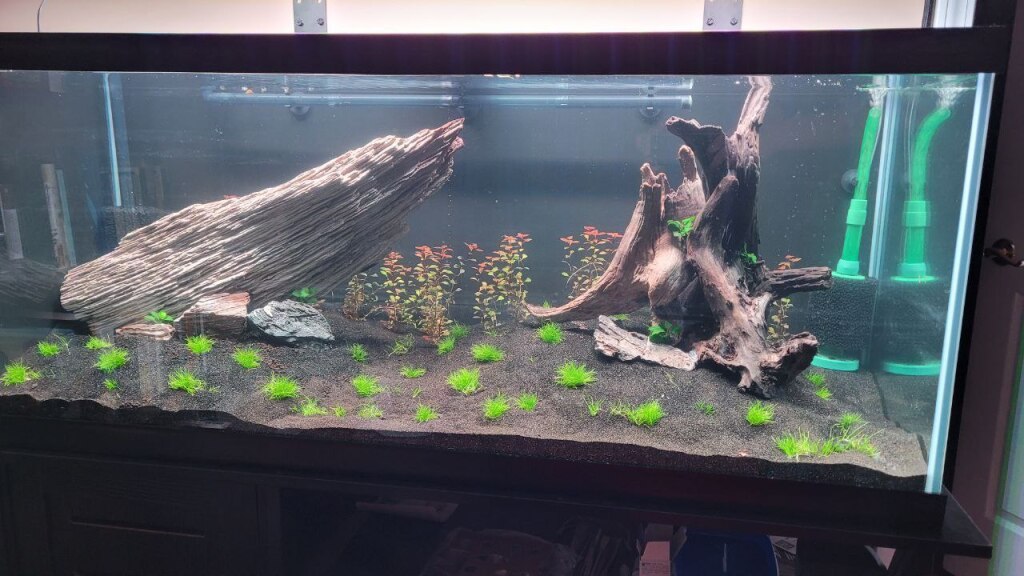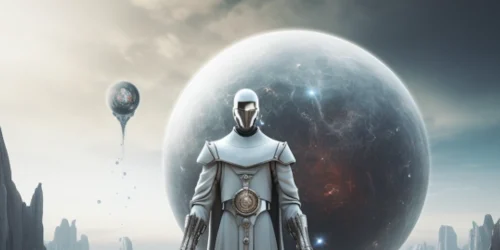Since the beginning of this year I discovered and was smitten by Aquascaping. I stumbled across some videos by people like MD Fish Tanks and was absolutely blown away by what they could do. To me, whenever I thought of fish aquariums, it was always the basic clear box with a top and a bright light shining in on glass rocks, treasure chest that emits bubbles, and some tacky decorations and fake plants, with a betta or some goldfish in there. Pretty much whatever you see in a big pet store chain. And while I’ve always loved fish and the water, it just didn’t appeal to me because the aquariums felt like a lot of work for something that looked pretty tacky overall. However, when I saw these beautiful ecosystems, with their myriad of plants, substrates, and natural set pieces, it felt like I was looking at a piece of living breathing art. And I had to try my hand at it.
I started watching how-to videos, and researching what goes into making these things. What size aquariums are ideal for beginners, good plants, the best filtration systems, CO2 setups, types of substrate, creating set pieces, etc. And of course after determining how I wanted to set up the aquarium, I then went looking for the right fish. A whole lot of fish get a whole lot larger than they look in the pet stores, because most fish in pet stores are babies/juveniles. Generally, the larger the fish get in the aquarium the less number of fish you can have overall. So you can have a large fish and a few smaller fish (provided the large one doesn’t eat the smaller ones), or a few medium size and some smaller fish, or a whole lot of small fish. I opted for getting a whole lot of small fish, because I wanted mine to feel vibrantly alive. Then I had to research what kind of fish, determine if the water parameters and temperatures would be right for them all, whether the fish would live together peacefully, and how many I’d need of each.
My final aquarium build looked like this:
- 75 Gallon aquarium, 48 x 18 x 21
- Twinstar Light EA1200 Ver. IV for lighting
- Penn-Plax Casacade 1500 canister filter
- An external heating system
- An external dual stage CO2 system
- Lava rock in mesh bags to add height to the substrate (actual substrate is expensive and this significantly cuts down on the cost)
- Fluval Stratum for the aquasoil layer
- Black sand substrate to cap the aquasoil layer.
For my plants, I went with dwarf hairgrass to carpet the sand and provide a rich lawn-like appearance. For the midground I went with Anubias Nana Petite and Hygrophila Pinnatifida to give some life to the wood I added. For the background I wanted it to be as close to solid red as I could, to make the gorgeous chunk of white fossilized wood really stand out. To that end I went with Ludwigia Palustris “Super Red”, a gorgeous and very fast growing stem plant. I also wanted some Alternanthera Reineckii in front o fthe Ludwigia, to hide the stems a bit. And finally at the top I wanted Red Root Floaters, to provide some shade.
For my fish, I decided on 6 Honey Gourami, 6-9 Otocinclus Catfish, 24 Cardinal Tetra, and also 20 bright yellow Neocaridina and Amano shrimp to help handle algae. I figured the yellow of the shrimp would go well with the yellow of the gouramis. All of this would provide a very lively and active tank, and absolutely beautiful colors.
By the end of April I knew exactly what I wanted, and how I’d build it out, and set about making all my purchases. I also knew that I wanted to do it all ‘right’, and that meant that in addition to the main 75 gallon tank, I would need a completely different separate quarantine aquarium setup, that I opted for 20 gallon size. The idea is, when you get new things for your aquarium, you don’t know what the conditions were, whether there are any diseases or contaminants sneaking along, or how the things are going to handle a new environment. So you put them in quarantine for at least 3 weeks, with the absolute basics to ensure everything coming into your main tank isn’t going to bring something nasty along with them. And you can also more easily pay close attention to them to watch for signs of sickness and disease.
Once I got all my stuff purchased, I set it up, planted the plants, added water, and started cycling the aquarium. Cycling an aquarium is a vital part of the process, and it refers to getting establishing the important bacteria that will eat Ammonia and convert it to Nitrites, and then another important bacteria will eat the Nitrites and convert it to Nitrates. These bacteria generally live in the filtration system, which is why it is important to have a proper sized system for the size of the aquarium. Fish produce ammonia from waste, and it it toxic to fish, nitrites are also toxic, as are nitrates (though much less so). It takes anywhere from 3-8 weeks on average for an aquarium to cycle, and involves regular testing to ensure the process is moving along properly.
And this was the result. I was pretty happy, and things were coming along. I knew it wouldn’t look amazing right from the start, because it’d take months for plants to really start growing in. At this point I had neither the Hygrophila Pinnatifida nor Red Root Floaters, the Hygrophilia I was still waiting on, and I wanted things to grow in more and get a lot of light before I added something like red root floaters that would add a lot of shade.

To be continued in Part 2






